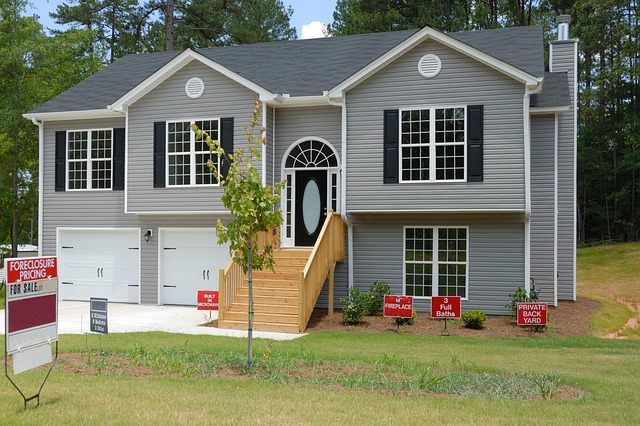Asset insurance for providers is a critical risk management tool, protecting equipment, buildings, and resources from unforeseen damage, theft, or loss. It offers various coverage options, including replacement cost and actual cash value, allowing businesses to maintain operations with minimal disruption. A comprehensive risk assessment is key to crafting tailored policies. The claims process involves prompt notification, investigation, documentation, and paperwork for recovery. Specialized asset insurance providers offer customized protection aligned with unique business needs.
In today’s competitive landscape, safeguarding your business assets is paramount. From high-tech equipment to valuable buildings, asset insurance offers comprehensive protection tailored to meet diverse needs. This article delves into the intricacies of asset insurance coverage, exploring essential aspects like protecting equipment, building insurability beyond structures, risk assessment for robust policies, and navigating the claims process. Additionally, we provide insights on customizing policies with various providers. Understanding these elements ensures businesses can select optimal asset insurance for their operations.
- Understanding Asset Insurance Coverage
- Protecting Equipment: Types of Coverage
- Building Insurance: Beyond the Structure
- Risk Assessment for Comprehensive Policy
- Claims Process: What You Need to Know
- Customizing Policies for Different Providers
Understanding Asset Insurance Coverage

Asset insurance for providers is a crucial aspect of risk management, designed to protect valuable equipment, buildings, and other critical resources from unforeseen events. This type of coverage offers comprehensive protection against physical damage, theft, or loss, ensuring businesses can continue operations with minimal disruption. By understanding asset insurance coverage, providers can tailor their policies to meet specific needs, covering everything from high-value machinery to real estate investments.
Knowing the scope of asset insurance involves recognizing various coverage options, such as replacement cost, actual cash value, and extended coverage. Replacement cost ensures that assets are repaired or replaced at their current market value, while actual cash value takes into account depreciation. Extended coverage can provide additional protection against events like natural disasters or vandalism. For providers, a thorough grasp of these concepts enables them to make informed decisions, ensuring their assets are adequately secured for any eventuality.
Protecting Equipment: Types of Coverage

Protecting critical equipment is a cornerstone of any business’s risk management strategy, and comprehensive asset insurance plays a pivotal role in this endeavor. This type of coverage ensures that providers are safeguarded against financial losses stemming from damage, theft, or malfunction of their essential machinery and tools. Asset insurance for providers typically includes various forms of protection tailored to specific equipment types.
One common option is property coverage, which compensates businesses for the physical loss or damage to their equipment. Another crucial aspect is liability protection, shielding providers against claims arising from accidents involving their assets. Additionally, some policies offer specialized coverage for high-value items, such as advanced technology or specialized machinery, ensuring these critical components are adequately insured against potential risks.
Building Insurance: Beyond the Structure

Building insurance goes beyond simply covering the physical structure of a property. It’s an essential asset insurance for providers, offering protection against various risks that can impact their business operations and financial stability. This includes comprehensive coverage for damages caused by natural disasters like earthquakes, fires, floods, or severe storms, ensuring that reconstruction and rebuilding efforts are financially feasible.
Furthermore, many policies extend insurance to business interruption, providing a safety net during periods of decreased revenue due to covered events. This can be crucial for providers who rely on consistent operations to sustain their businesses. By prioritizing comprehensive building insurance, asset insurance for providers is secured, offering peace of mind and financial safeguards in the face of unforeseen circumstances.
Risk Assessment for Comprehensive Policy

Before crafting an insurance policy that covers equipment, buildings, and other valuable assets, a thorough risk assessment is crucial. This process involves evaluating every aspect of your operation to identify potential hazards and their likelihood. It’s not just about physical structures; it encompasses machinery, data, and even reputational damage. Professionals in asset insurance for providers leverage this analysis to design policies that offer the right balance between coverage and cost.
The risk assessment guides customization, ensuring that the policy fits like a glove. By understanding unique risks specific to your business, you can safeguard your assets effectively. This proactive approach not only mitigates financial losses but also instills confidence in continuing operations without the burden of unexpected costs from disasters or accidents.
Claims Process: What You Need to Know

When it comes to asset insurance for providers, understanding the claims process is vital. The first step in making a claim involves promptly notifying your insurance provider after any loss or damage occurs. This swift action ensures that your assets are protected and that you can begin the recovery process.
During this phase, your insurance company will assign an adjuster who will investigate the incident, assess the damage to your buildings and equipment, and determine the cost of repair or replacement. It’s important to cooperate fully with the adjuster by providing all necessary documentation and access to affected areas. Once the assessment is complete, they’ll provide a claim estimate, and you can then submit the required paperwork to initiate the settlement process.
Customizing Policies for Different Providers

When it comes to insuring equipment, buildings, and other valuable assets, one size does not fit all. Each provider has unique needs, from specific industry standards to the nature of their operations. Customizing policies to cater to these differences is a key advantage of working with specialized asset insurance providers.
These insurers offer tailored solutions that consider factors like the type of equipment (e.g., machinery, technology), building construction and age, and the location. By understanding these nuances, they can create comprehensive coverage packages that protect against specific risks relevant to each provider’s operations. This level of customization ensures that policies align with the unique asset profiles of various businesses.
